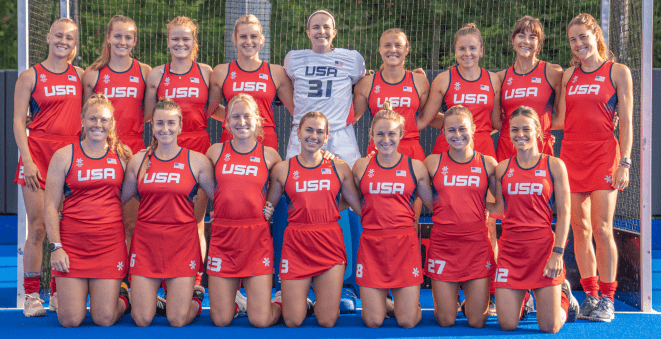Your noggin matters.
And when you sign up to play sports, either contact or non-contact, you are subjecting yourself to potentially sustaining a blow to your head – directly or indirectly.
Any force of impact or sudden change in movement to the head can cause the brain to shift inside the skull. This jolt can result in trauma to the brain which is categorized as a traumatic brain injury. Traumatic brain injury, TBI for short, is a spectrum of brain injuries at varying severities.
Concussions are a mild form of a TBI. Over 75 percent of the 2.8 million TBI’s occurring each year are diagnosed as concussion, which makes it the most diagnosed type, according to the Centers for Disease Control and Prevention.
While all concussions are classified as a TBI, it is important to note that not all TBIs are concussions. In most cases, the symptoms of a mild concussion are temporary, while symptoms of a TBI can have severe and life-long detrimental effects.
The Brain Injury Association of America reports that common symptoms of a concussion or a mild TBI include headache, migraine, sensitivity to light and sound, nausea, dizziness, and fatigue. Those symptoms are often accompanied by a feeling of brain “fog.”
However, the more severe the injury, the more severe the symptoms. Speech issues, disorientation, vomiting, extreme drowsiness, changes in mood or behavior, and loss of consciousness are all additional signs of a more severe case of TBI.
While each case of TBI is different, they all require medical attention – even if it is a mild case like a concussion.
Millions of people who suffer from a concussion go undiagnosed, dismissing their injury as “just a bump on the head.” But the effects of a concussion, even a mild one, can have a lasting impact if not acknowledged and addressed with adequate care and precaution.
Instead of sharing the same unconfirmed myths about concussions, I reached out to Dr. Matthew Silvis, the director of Primary Care Sports Medicine at Milton S. Hershey Medical Center. He filled me in on the latest research and information.
To be clear, this new information being discussed is in regard to mild forms of TBI such as concussions, specifically sustained in sport. This information most likely will not be applicable in more severe cases of TBI.
“Concussion recovery has drastically changed in the last few years,” he told me. The reason is, in part, due to research conducted by University of Buffalo Primary Care Sports Medicine Physician Dr. John Leddy. His research directly showed that doctors were wrong about what truly heals the brain after a concussion.
Just a few years ago, it was recommended to stop all exercise until you were 100 percent symptom free when recovering from a concussion. Along with no exercising, it was also prescribed to have no stimulation to your brain. This eliminated school and social activities. This treatment was called “cocooning.”
Taking away school and social activities was found to be counterproductive with the student-athletes’ mood. Naturally, that’s a difficult task for an athlete in general.
What athlete wants to lay on the couch for 10 days in the dark with no movement or socialization? Let’s keep in mind, the evidence is for a concussion.
The two newest scientifically proven changes surrounding concussion recovery discovered by Leddy showed the following: First, keep the kids in school.
You will need to make small changes as needed for each student but keep them in school. Students may require extra time on tests, a midday break in the nurse’s office, even delayed testing until fully recovered, and minimal homework assignments, if any.
Second, exercise during concussion enhances healing.
Light aerobic exercise or “effortless exercise” increases blood flow to the brain which promotes healing. A few examples include jogging, biking, elliptical, and light weight training. It is very important that your doctor clears you for these activities before you assume that you can do them.
Every head injury is different and every recovery is different. This is not the time to compare yourself to someone else.
“The time that you need to recover from a concussion differs on many factors,” says Silvis. “The typical 7-10 days off the field or court is measured by symptoms. The more concussions you have had, the longer it takes you to recover. The less force it takes to create the next concussion.”
Females are two to four times more likely to endure a concussion.

NCAA women’s ice hockey being the leader of all female concussions at 18 percent. Soccer is second.
Dr. Silvis discussed the reasons that females are more likely to endure a concussion and stated that “females are more honest about their symptoms. Males tend to hide their symptoms or not tell anyone, so they can continue to play on the field. Also, female neck strength is 20 percent weaker than males.”
There are exercises that athletes can do to help strengthen their neck. Manual resistance exercises are very common.
Silvis also added that “females land differently than males and are more likely to land with their legs straight.” Gaining power and strength in the lower extremities would help decrease the straight leg landing, along with box jumps and other exploding movements.
There will always be risks to playing sports.
If you think there is even the slightest chance that you have suffered a TBI, it’s imperative that you get observed by a professional. It’s also very important that you listen to the recovery plan and listen to your body. You know your body better than anyone else, so advocate for yourself and speak up if you know something is not right.
Mary Driscoll’s health and wellness column publishes every other Thursday.




